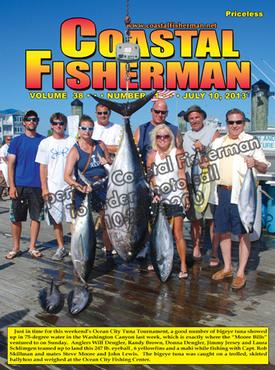


Article by Pat Schrawder
 NEW IN FISHFINDERS FROM FURUNO
NEW IN FISHFINDERS FROM FURUNO
While it is certainly true that the trend recently has been favoring combined plotter-fishfinder units, there are still those who prefer separate pieces of electronics. Whether it is the fear of losing everything if a combined unit malfunctions or just the ability to see one dedicated picture on a screen, it is the clear choice for some.
Furuno is one of the full line marine electronic equipment manufacturers that has responded to that market segment by not only keeping fully dedicated, stand-alone fish finders in their product line, but also coming up with features to enhance their performance. Let’s take a look at some of their more notable features.
Improved LCD display
Their LCD’s are rated as 800 cd/m and, so they say, can be seen even in bright sunlight. The LCD and the AR glass that covers it are bonded together to eliminate any “fogging” of the screen and Furuno maintains that their screens can be seen even when wearing polarized sunglasses.
Bottom Discrimination
This feature is not new in the marine electronics field, but Furuno has taken it a bit further than usual with their built-in analyzer of bottom structure. There are two modes available. In the graphic display mode, the screen uses four different colors on the bottom seabed to indicate the probable surface of rocks, gravel, sand or mud. There is also a graph form that indicates the probability of bottom composition type. If your particular interest is wrecks or bottom fishing, this feature can be especially helpful. Furuno has put some conditions on the proper performance of this feature, however. They suggest or require the following things for maximum outcome:
1. Use at a depth of 5m to 100m.
2. Use an approved transom mount or thru-hull mounted transducer.
3. Set the range display to “auto”.
4. Enter the ship’s draft figure.
5. Use a ship’s speed of 10 knots or less.
There are some other features like their post-processing gain control, their fast transmission of 3,000 PPR (Pulse Repetition Rate) and digital filter that all improve overall performance, but it is their trademark “ACCU-FISH™” that identifies individual fish with size and fish symbol that stands out the most.
All fishfinders are capable of detecting larger fish from smaller ones. It is a matter of how long the returning fish signal remains in the beam. To understand this, just picture that the fishfinder is sending out signal pulses through the water that are reflected back to the receiver when they strike an object that is more dense than the water in which they are traveling. If the target is larger, it returns signals for a longer period of time. The seabed bottom returns a continuous signal. The type of signal, its relative strength and its duration are all computed by the fishfinder. What is unique about Furuno’s “ACCU-FISH™” is that they actually show you a numerical data field on the display screen.
Two types of fish symbols can be selected, a circle or a square, to display individual fish echoes when detected. The fish symbol can be displayed in two sizes (large or small) to aid in identifying types of fish. You can choose to activate the ACCU-FISH™ function or not but, when it is used along with the fish marks, you will definitely notice if there is the presence of fish. Additionally, you can choose to show the depth of the targets instead of the relative size. This is more useful information in my opinion as it tells you how far the fish is under your boat.
If you think this is too much information on the screen, you can select the dual frequency mode and have the detailed information on one screen with just the normal fishfinder presentation on the other.
Furuno has gone out of its way to think of just about everything on their current line of fishfinders. If you are one of those who likes individual units, you owe it to yourself to at least check out this line and compare it to what else is on the market.
Pat and her husband, Larry are owners of L&L Marine Electronics on Golf Course Road in West Ocean City, MD.